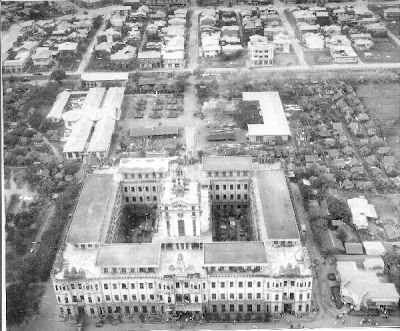I had the privilege of interviewing Ms. Sascha Weinzheimer Jansen, a Santo Tomas Internment Camp survivor, while I was writing Remember the Lilies. It was such a highlight for me. She was gracious enough to spend yet another hour on the phone with me as she was preparing to travel to Manila for the 70th anniversary celebration of the liberation of the camp on February 3rd. This is the first of a three part interview. I will post part 2 on Monday and part 3 on release day, the 70th anniversary .

Thank you for joining us, Ms. Jansen. We’re so glad to have your perspective on the war and on the Santo Tomas camp. It’s important to both of us to make sure future generations hear the true story of what happened 70 years ago.
How old were you when you entered the camp?
“I was 8 years old when the war started, but I didn’t enter the camp right away. My brother was three months old, and the Japanese didn’t make nursing mothers enter the camp at first. We were able to stay at a convent. Only my father had to go. Once a month, we would go to register and we could see him and bring him food. Eventually, though, things became bad on the outside. Food was harder to get, and we were afraid of the Japanese soldiers. We thought it would be best to be with my father, so we joined him after about a year, just around my 10th birthday.”
What members of your family were with you?
“It was my mother, my father, my sister, my brother and myself. I also had an aunt and an uncle in the camp, so I did have family there.”
Why were you living in the Philippines at the time?
“My family was from Hawaii. My grandfather ran a sugar plantation there. The company also had a sugar plantation in the Philippines, so he went to work there around the turn of the 20th century. My father worked at the same place, and that’s where I lived. By the time of the war, my grandfather had returned to California. We had a very comfortable life there.”
How did you feel about going into the camp?
“Because my father was inside and we were outside for that first year, it was really a sense of relief to get into the camp. We were all able to be together as a family again, and that was good. It was scary on the outside, and we felt safer in the camp with my father. I don’t remember being afraid about being in the camp.”
Where did you live in the beginning?
“At first, we lived in a building called the Annex. That’s where mothers with small children were. We were in a room with thirty other mothers and children. There was a lot of disease because of the close quarters.

My father built a shanty, about 10 feet by 11 feet, and he was able to stay there, but we weren’t. The shanty was made of sawali mats – bamboo reeds woven together – and a thatched roof. The floor was made of bamboo strips, and the shanty was on stilts. After a while, the women and children could stay there, too. We had to have a hole in the side so that the couples didn’t do anything the Japanese didn’t like.
“The hut was small. We had a little sink with a hole that went to the outside. There was a table with chairs. My parents had a mattress to sleep on, sort of on this platform. After a while, I had a mattress, too.”
Look for part 2 on life in the camp on Monday.
Thanks for your personal marvelous posting! I actually enjoyed reading it, you could
be a great author.I will remember to bookmark your blog and
will come back in the foreseeable future. I want to encourage yourself to continue your great posts, have a nice day!